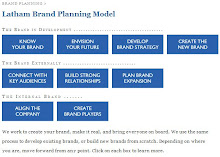There hasn't been a bigger idea than a $700 billion bailout.
That's an eye-opener, whichever way you look at it.
Yet, what actually happened to that $700 billion bailout concept this week, is a lesson for all of us who manage ideas, shape stories and messaging, and build futures.
As you know, the $700 billion concept failed.
It failed because members of Congress were uncertain about the program, and members of Congress were uncertain because their constituents were enraged.
Rage is a very difficult force to manage.
It doesn't matter that rage was misdirected. It doesn't matter that rage was pointing in the wrong direction. Rage is rage.
At the core of the $700 billion bailout, however, was -- and still is -- a very good business idea.
In essence, Treasury officials argued:
All those 'failed' mortgages aren't worthless.
They are certainly worth something today, and at some point in the not-so-distant future, they will be worth more -- in fact, much more than they are worth today.
So let's buy those mortgages, said Treasury.
Let's manage them intelligently and protect the assets.
And then, at some point in the future, when they have substantially regained their value, let's sell them.
In the process, we will recapture the investment we made in buying mortgages in the first place -- and then some -- and we will be in a great position to return the proceeds to the American people.
It's likely those proceeds will be worth more than $700 billion. A lot more.
Doesn't that make sense?
Effectively, that's what the so-called $700 billion bailout plan -- or rescue plan -- was all about.
It wasn't about giving money to Wall Street.
It wasn't about mega-bonuses to chief executives.
It was a serious, well-considered investment by Treasury in assets that will increase in value (probably sooner, rather than later) and can be sold at a profit -- or at zero loss -- for the benefit of the American people.
Which is a pretty sound idea, by any measure.
Best of all, it's not a difficult concept to understand or embrace.
But, amazingly, did you ever hear anything like this clearly articulated this past week -- by Treasury officials, House or Senate members, or anyone, for that matter?
No, you didn't.
You might have heard isolated voices, especially in the aftermath.
But the story above wasn't Treasury's pitch.
It should have been.
Our view is that it isn't hard to rationalize complex ideas, make them simple, and communicate them clearly so people can understand them and embrace them.
Or it shouldn't be.
But apparently, this week, that was a tall order.
We hope that reality, plain talk, and understanding will prevail in the days ahead.


